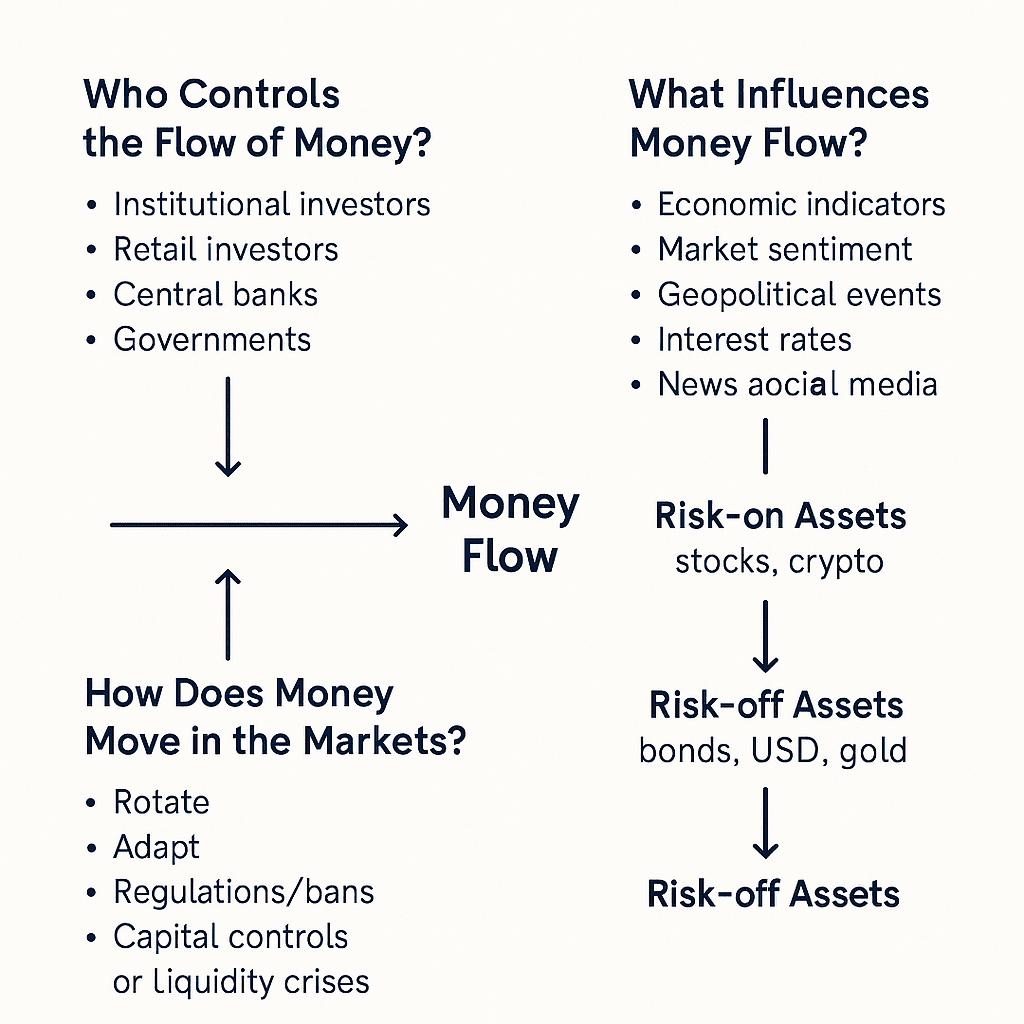1. What is Money Flow?:
Money flow refers to the movement of capital into and out of financial markets. It reflects where investors are putting their money, whether into assets (buying) or pulling it out (selling). Monitoring money flow provides insight into market sentiment, institutional behavior, and potential trend reversals.
2. Who Controls the Flow of Money?:
The flow of money in the markets is influenced primarily by:
Institutional Investors: Hedge funds, banks, asset managers, and sovereign wealth funds.
Retail Investors: Individuals who participate in the markets.
Central Banks: Through monetary policy, interest rates, and liquidity injection or withdrawal.
Governments: Through fiscal policy, regulations, and geopolitical moves.
In reality, large institutional players are the ones who move markets significantly. Their trades are massive enough to influence price trends.
3. How Does Money Move in the Markets?:
Money typically flows from:
Risk-off assets (like bonds, USD, gold) during uncertainty.
To Risk-on assets (like stocks, crypto) during optimism.
Money flow also follows rotations from one sector or asset class to another based on economic conditions and market cycles. For example:
From tech stocks to commodities during inflation.
From crypto to cash during bear markets.
4. Can Money Flow Be Stopped?:
Money flow cannot be “stopped,” but it can be slowed, redirected, or disrupted. Examples include:
Regulations or bans (e.g., crypto bans in some countries).
Capital controls (limiting cross-border money movement).
Liquidity crises (like in 2008 or FTX collapse).
However, markets tend to adapt quickly. Capital seeks opportunity, and if blocked in one place, it flows elsewhere.
5. What Influences Money Flow?:
Money flow is affected by:
Economic indicators: Inflation, GDP, employment data.
Market sentiment: Fear and greed cycles.
Geopolitical events: Wars, sanctions, elections.
Interest rates and monetary policy.
News and social media: Especially in crypto markets.
6. How to Use Money Flow in Trading?:
Understanding money flow can help in:
Identifying entry and exit points: Where smart money is moving.
Spotting accumulation or distribution phases.
Following volume spikes, OBV (On-Balance Volume), or indicators like CMF (Chaikin Money Flow).
Noticing unusual movements in stablecoins, BTC dominance, or large wallets activity.

Summary:
Money flow is the lifeblood of the financial markets. Knowing who controls it, how it moves, and what impacts it can give traders and investors a strong edge. Instead of following price alone, following money flow reveals the story behind the price.
That's all for today. Please like and follow for more! 🙏🥰



